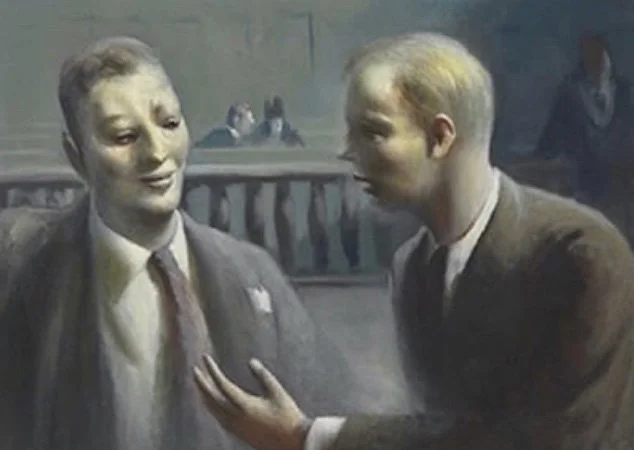Edward Hopper and Guy Pène du Bois: Painting the Real
December 17, 2022 — March 26, 2023
On view at the Polk Museum of Art
511 Gallery and 511 Projects is delighted to present, in collaboration with the Polk Museum of Art, Edward Hopper and Guy Pène Du Bois: Painting the Real, opening Winter 2022.
This will be the first exhibition to examine the works of these American modernist masters in the contexts of their friendship, variant approaches to realist painting, and the twentieth century in which they lived. Born in Brooklyn in 1884 to French parents, Guy Pène du Bois was a painter of people and their relationships. His French-American dualist identity gave him a unique perspective as both insider and outsider – both at home and abroad – towards Americans and American life in those years. His drawings and paintings are infused with a keen sense of observation, irony, and nuance not found in the portraits and social scene renderings of other realist artists of the period. Though his work is most well-known for its commentary and depiction of the social lives of the upper classes, his art extended to all economic, social, and cultural groups, viewing the American twentieth century through the lives of performers, soldiers, household workers, and working women as well as the privileged few.
Edward Hopper, on the other hand, was decidedly American and home-grown. Born in 1882 in the village of Nyack, New York, only thirty minutes north of New York City, he lived there until he was 22 years old, moving to the city in 1910 and finding a permanent home and studio in Greenwich Village in 1913. In his private paintings of the time, his subjects were the landscape and the few people of his immediate physical environment. That position of solitary observer in sparsely peopled places, with limited relationships, gave Hopper a unique perspective on America as well – though in his case, it was through the prism of physical structures and landscapes that became, for him, the context of people’s working and social lives.
Hopper and Pène du Bois became fast friends while studying at the New York School of Art from 1900 to 1905 under William Merritt Chase and Robert Henri, and there cemented their shared commitment to painting the Real. Their professional interactions were frequent, with Pène du Bois playing a major role in encouraging and abetting Hopper’s career.
Each artist had his own approach to painting real life, and the differences in their personalities are made manifest in their art. Hopper, much of a loner, with few friends outside a small circle and not comfortable in most social settings, was an artist primarily interested in landscape and the structures that filled it. When he painted people, their physical settings, outside or in rooms, were often more important than their personalities. His houses are not only masterfully portrayed, but also are endowed with personalities: They are “lonely houses”, a house protected by a rain barrel or a tree, houses in danger from human-made poles and machines intruding in the landscape, and houses with shades drawn down, abandoned, with overgrown lawns. Pène du Bois, on the other hand, gregarious and socially adept, could draw and paint fluidly a French or Connecticut landscape with no people present, but, as he wrote in his 1940 memoir, “Wherever one lives, the people are certainly in the end more important than the setting.”
Despite their close relationship, past exhibitions have rarely placed these two artists in any but solo considerations. Edward Hopper and Guy Pène du Bois: Painting the Real will be the first exhibition to pair and place in contextual dialogue the art of these two friends and colleagues who shared a commitment to the realist painting of modern life.
The exhibition will be on view at the Polk Museum of Art, in Lakeland, Florida, from December 17, 2022 through March 26, 2023.
Edward Hopper and Guy Pène du Bois: Painting the Real is co-curated by H. Alexander Rich, Director and Chief Curator of the Polk Museum of Art, and Mara Miller, Guest Curator and Managing Director of 511 Projects in New York City. Dr. Rich received his Ph.D. from the Institute of Fine Arts, New York University, his dissertation, Artist or Critic?: Guy Pène du Bois and the Search for Artistic Identity. Mara Miller received her M.A. from Bard College’s Center for Curatorial Studies in Contemporary Art and Culture, her thesis and thesis exhibition, Nature/Culture and the Postmodern Sublime: Frank Moore and Gregory Crewdson.
PLEASE NOTE: In preparation for this show, the gallery will be closed from December 12 — December 20.
For more information and further questions about the exhibition, please contact the gallery by phone or via email at 511gallery@gmail.com
Image Caption: 1. Guy Pène du Bois, Two Figures in a Courtroom, ca. 1945-1946, Private Collection
2. Guy Pène du Bois, Portrait of Patricia Pike, 1941, Estate of Yvonne Pène du Bois McKenney


